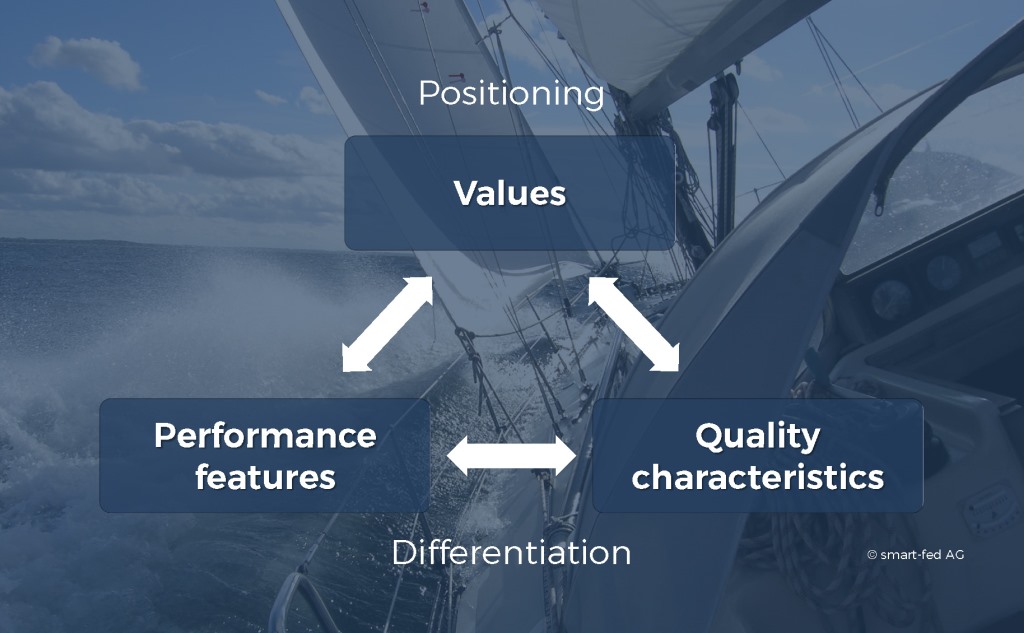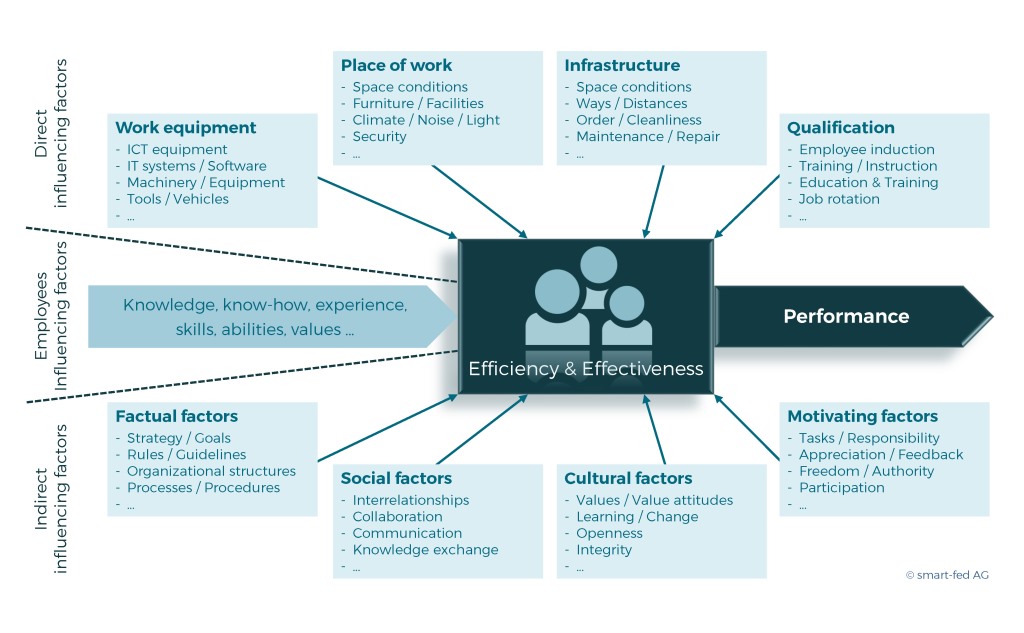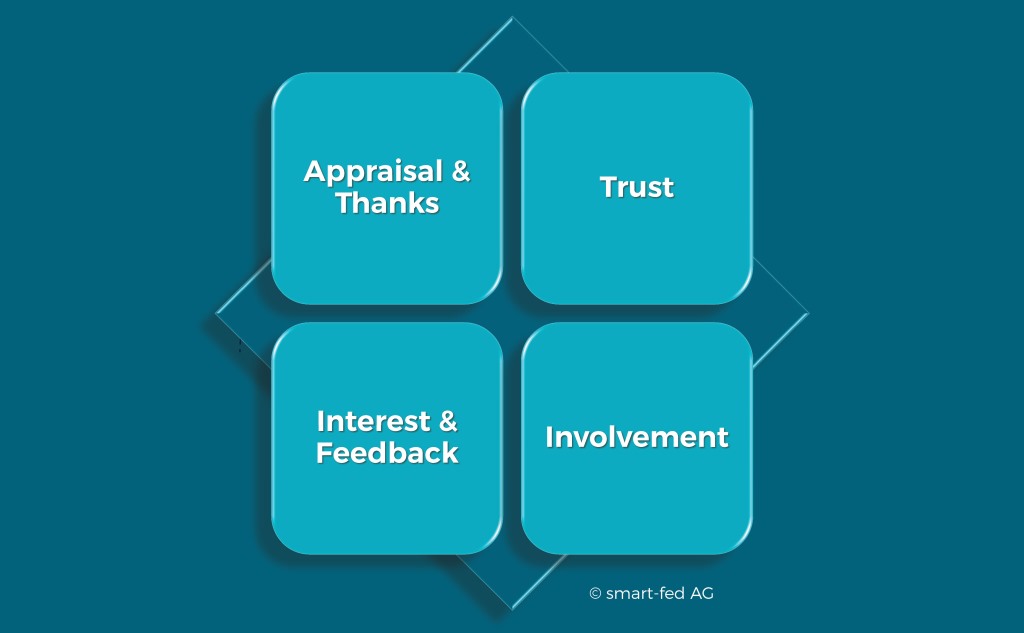Core elements of the corporate strategy
Positioning & Differentiation
A clear strategy is still one of the most important bases for the long-term success of companies. Without it, every company appears arbitrary and interchangeable to the outside world, and without support and meaning for the employees on the inside. It is the key to consistent and stringent busi-ness and organizational development.
However, this is not about strategic goals, which in our dynamic world have only a short half-life anyway and are quickly overtaken by the real world. Rather, it is about the image and values that are to shape the company externally and internally in the long term. Even if these are never set in stone and have to adapt to social, technological and other changes in the market.
A good strategy must have space on a sheet of paper, such as the Business Canvas model. In this article, however, the focus will be primarily on those two elements which probably have the most lasting influence on the strategic orientation of a company.
The Positioning
It may sound a bit old-fashioned, but sooner or later every company positions itself in the market. Whether this happens consciously or more by chance is a question of professionalism in corporate management.
A company always produces an image in the minds of its customers and, of course, in the market itself. In other words, it generates values that are perceived intentionally or unintentionally.
Therefore, it is important to consciously decide which customers and markets to focus on and which values to occupy in the minds of your customers.
These are the values that significantly define the image of the company and what it should ultimately stand for. Examples of these are innovation, sustainability, diversity, speciality, professionalism, cheapness, globality, flexibility, quality, luxury, design, accessibility, trustworthiness, service excellence and many others.
A distinction must be made between core values and possible secondary values, such as the topical trend toward “greenwashing” of companies and brands, which is due more to the spirit of the times than to genuine positioning.
The Differentiation
This is about specifying the rather rudimentary values from positioning. It defines the concrete performance and quality characteristics with which a company wants to distinguish its products and services from those of its competitors.

Short delivery times, a wide range of products, unique functionalities, simple operation, high convenience, high-performance products or energy efficiency are just a few examples of typical performance features.
Punctuality, precision, high quality workmanship, high quality raw materials, durability, reliability, purity, efficiency, freedom from defects, friendliness or attention are more understood as quality characteristics.
The implementation
However, positioning and differentiation must not only play a role in external communication. Every employee must also be familiar with the central values and the differentiating performance and quality features in internal communication.
They must also be stringently incorporated into the company’s cultural values, processes, rules and instruments. For example, companies that define innovation as a core value of their positioning should promote an open and diverse exchange of ideas and opinions internally and use agile processes and methods.
If there are contradictions between the values defined and the values actually lived, a corporate strategy will probably never really be implemented and will ultimately fail due to inconsistency.
⇒ Author: Martin Mechlinski / SMART FED
Core elements of the corporate strategy
Positioning & Differentiation

A clear strategy is still one of the most important bases for the long-term success of companies. Without it, every company appears arbitrary and interchangeable to the outside world, and without support and meaning for the employees on the inside. It is the key to consistent and stringent busi-ness and organizational development.
However, this is not about strategic goals, which in our dynamic world have only a short half-life anyway and are quickly overtaken by the real world. Rather, it is about the image and values that are to shape the company externally and internally in the long term. Even if these are never set in stone and have to adapt to social, technological and other changes in the market.
A good strategy must have space on a sheet of paper, such as the Business Canvas model. In this article, however, the focus will be primarily on those two elements which probably have the most lasting influence on the strategic orientation of a company.
The Positioning
It may sound a bit old-fashioned, but sooner or later every company positions itself in the market. Whether this happens consciously or more by chance is a question of professionalism in corporate management.
A company always produces an image in the minds of its customers and, of course, in the market itself. In other words, it generates values that are perceived intentionally or unintentionally.
Therefore, it is important to consciously decide which customers and markets to focus on and which values to occupy in the minds of your customers.
These are the values that significantly define the image of the company and what it should ultimately stand for. Examples of these are innovation, sustainability, diversity, speciality, professionalism, cheapness, globality, flexibility, quality, luxury, design, accessibility, trustworthiness, service excellence and many others.
A distinction must be made between core values and possible secondary values, such as the topical trend toward “greenwashing” of companies and brands, which is due more to the spirit of the times than to genuine positioning.
The Differentiation
This is about specifying the rather rudimentary values from positioning. It defines the concrete performance and quality characteristics with which a company wants to distinguish its products and services from those of its competitors.
Short delivery times, a wide range of products, unique functionalities, simple operation, high convenience, high-performance products or energy efficiency are just a few examples of typical performance features.
Punctuality, precision, high quality workmanship, high quality raw materials, durability, reliability, purity, efficiency, freedom from defects, friendliness or attention are more understood as quality characteristics.
The implementation
However, positioning and differentiation must not only play a role in external communication. Every employee must also be familiar with the central values and the differentiating performance and quality features in internal communication.
They must also be stringently incorporated into the company’s cultural values, processes, rules and instruments. For example, companies that define innovation as a core value of their positioning should promote an open and diverse exchange of ideas and opinions internally and use agile processes and methods.
If there are contradictions between the values defined and the values actually lived, a corporate strategy will probably never really be implemented and will ultimately fail due to inconsistency.
⇒ Author: Martin Mechlinski / SMART FED









